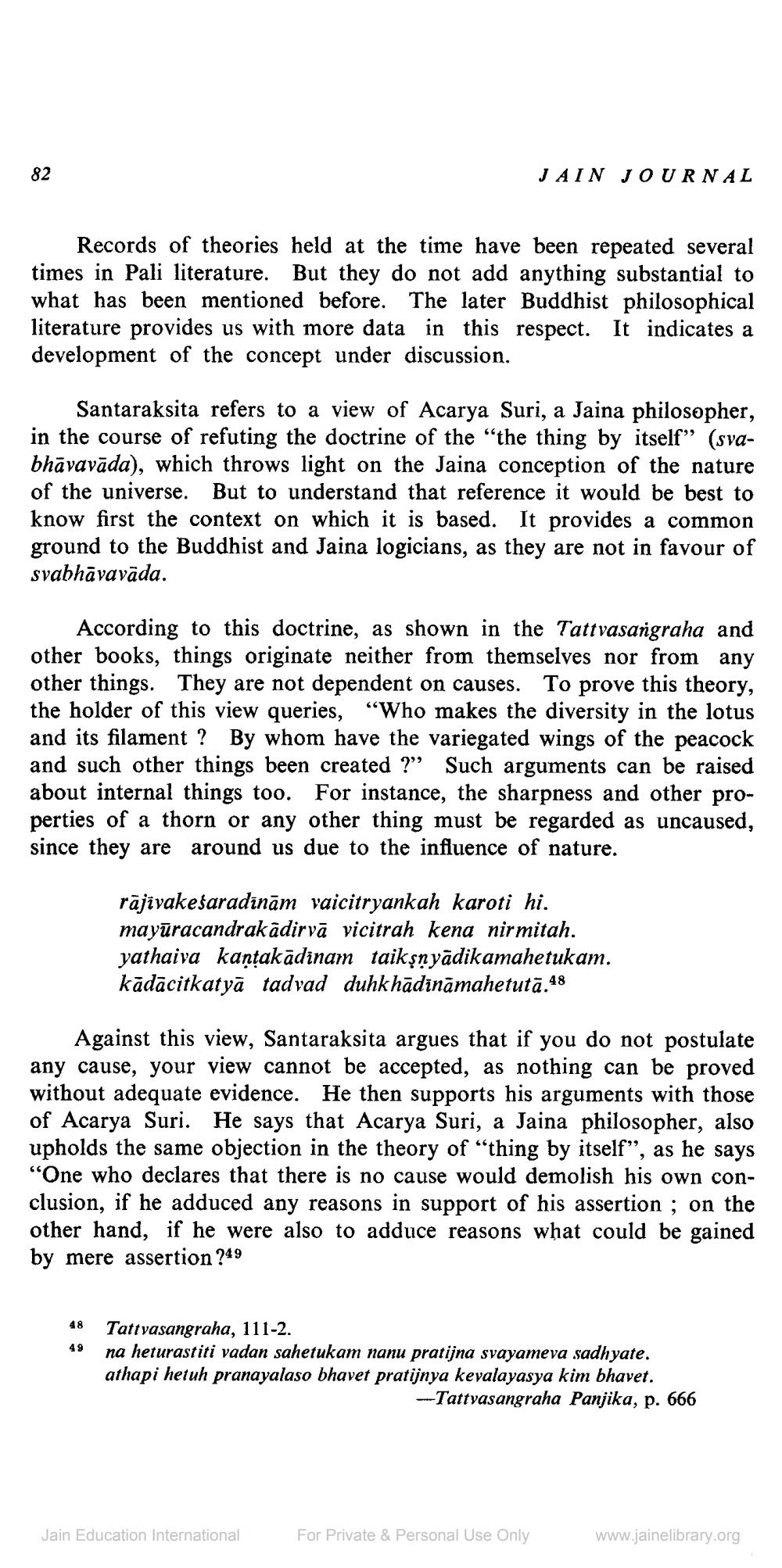________________
JAIN JOURNAL
Records of theories held at the time have been repeated several times in Pali literature. But they do not add anything substantial to what has been mentioned before. The later Buddhist philosophical literature provides us with more data in this respect. It indicates a development of the concept under discussion.
Santaraksita refers to a view of Acarya Suri, a Jaina philosopher, in the course of refuting the doctrine of the "the thing by itself” (svabhāvavāda), which throws light on the Jaina conception of the nature of the universe. But to understand that reference it would be best to know first the context on which it is based. It provides a common ground to the Buddhist and Jaina logicians, as they are not in favour of svabhāvavāda.
According to this doctrine, as shown in the Tattvasangraha and other books, things originate neither from themselves nor from any other things. They are not dependent on causes. To prove this theory, the holder of this view queries, “Who makes the diversity in the lotus and its filament ? By whom have the variegated wings of the peacock and such other things been created ?” Such arguments can be raised about internal things too. For instance, the sharpness and other properties of a thorn or any other thing must be regarded as uncaused, since they are around us due to the influence of nature.
räjivakeśaradinām vaicitryankah karoti hi. mayūracandrakādirvā vicitrah kena nirmitah. yathaiva kantakādinam taikşn yādikamahetukam. kādācitkatyā tadvad duhkhādināmahetutā.48
Against this view, Santaraksita argues that if you do not postulate any cause, your view cannot be accepted, as nothing can be proved without adequate evidence. He then supports his arguments with those of Acarya Suri. He says that Acarya Suri, a Jaina philosopher, also upholds the same objection in the theory of “thing by itself”, as he says “One who declares that there is no cause would demolish his own conclusion, if he adduced any reasons in support of his assertion ; on the other hand, if he were also to adduce reasons what could be gained by mere assertion ?49
48
Tattvasangraha, 111-2. na heturastiti vadan sahetukam nanu pratijna svayameva sadhyate. athapi hetuh pranayalaso bhavet pratijnya kevalayasya kim bhavet.
---Tattvasangraha Panjika, p. 666
Jain Education International
For Private & Personal Use Only
www.jainelibrary.org




